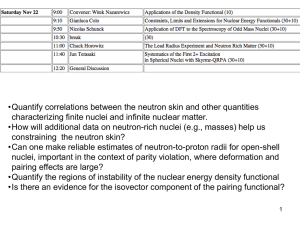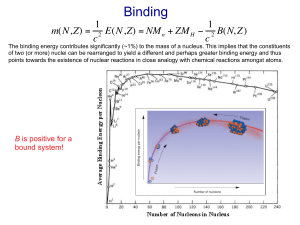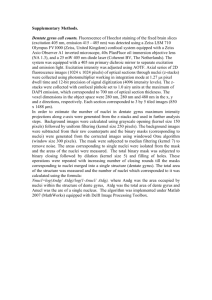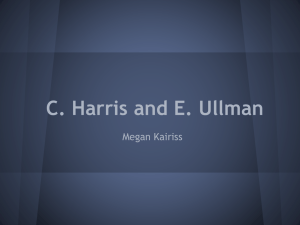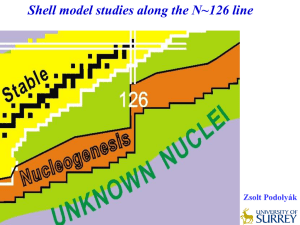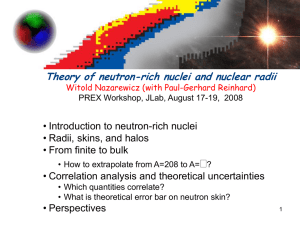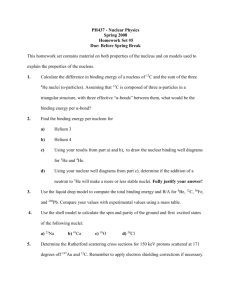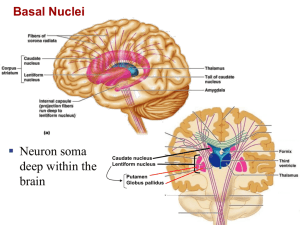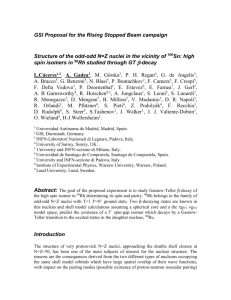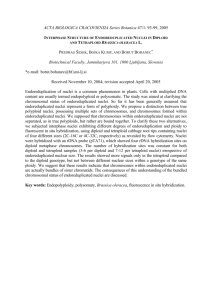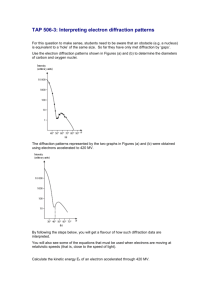Level density parameters - Institute of Particle and Nuclear Physics
advertisement
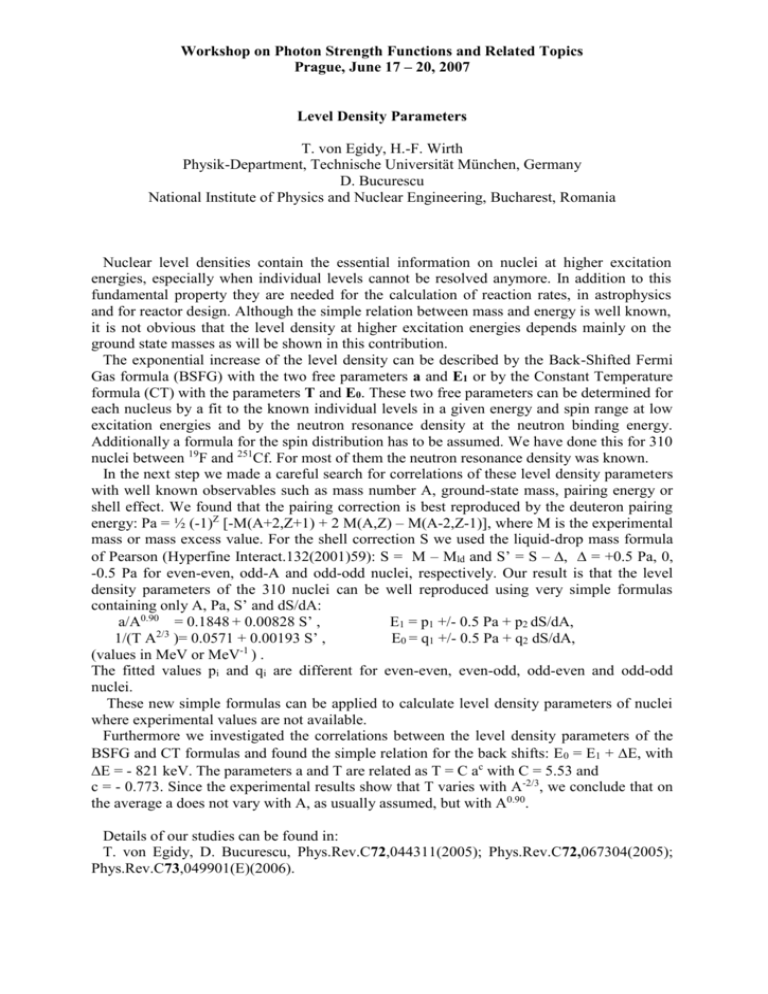
Workshop on Photon Strength Functions and Related Topics Prague, June 17 – 20, 2007 Level Density Parameters T. von Egidy, H.-F. Wirth Physik-Department, Technische Universität München, Germany D. Bucurescu National Institute of Physics and Nuclear Engineering, Bucharest, Romania Nuclear level densities contain the essential information on nuclei at higher excitation energies, especially when individual levels cannot be resolved anymore. In addition to this fundamental property they are needed for the calculation of reaction rates, in astrophysics and for reactor design. Although the simple relation between mass and energy is well known, it is not obvious that the level density at higher excitation energies depends mainly on the ground state masses as will be shown in this contribution. The exponential increase of the level density can be described by the Back-Shifted Fermi Gas formula (BSFG) with the two free parameters a and E1 or by the Constant Temperature formula (CT) with the parameters T and E0. These two free parameters can be determined for each nucleus by a fit to the known individual levels in a given energy and spin range at low excitation energies and by the neutron resonance density at the neutron binding energy. Additionally a formula for the spin distribution has to be assumed. We have done this for 310 nuclei between 19F and 251Cf. For most of them the neutron resonance density was known. In the next step we made a careful search for correlations of these level density parameters with well known observables such as mass number A, ground-state mass, pairing energy or shell effect. We found that the pairing correction is best reproduced by the deuteron pairing energy: Pa = ½ (-1)Z [-M(A+2,Z+1) + 2 M(A,Z) – M(A-2,Z-1)], where M is the experimental mass or mass excess value. For the shell correction S we used the liquid-drop mass formula of Pearson (Hyperfine Interact.132(2001)59): S = M – Mld and S’ = S – , = +0.5 Pa, 0, -0.5 Pa for even-even, odd-A and odd-odd nuclei, respectively. Our result is that the level density parameters of the 310 nuclei can be well reproduced using very simple formulas containing only A, Pa, S’ and dS/dA: a/A0.90 = 0.1848 + 0.00828 S’ , E1 = p1 +/- 0.5 Pa + p2 dS/dA, 2/3 1/(T A )= 0.0571 + 0.00193 S’ , E0 = q1 +/- 0.5 Pa + q2 dS/dA, (values in MeV or MeV-1 ) . The fitted values pi and qi are different for even-even, even-odd, odd-even and odd-odd nuclei. These new simple formulas can be applied to calculate level density parameters of nuclei where experimental values are not available. Furthermore we investigated the correlations between the level density parameters of the BSFG and CT formulas and found the simple relation for the back shifts: E0 = E1 + E, with E = - 821 keV. The parameters a and T are related as T = C ac with C = 5.53 and c = - 0.773. Since the experimental results show that T varies with A-2/3, we conclude that on the average a does not vary with A, as usually assumed, but with A0.90. Details of our studies can be found in: T. von Egidy, D. Bucurescu, Phys.Rev.C72,044311(2005); Phys.Rev.C72,067304(2005); Phys.Rev.C73,049901(E)(2006).

